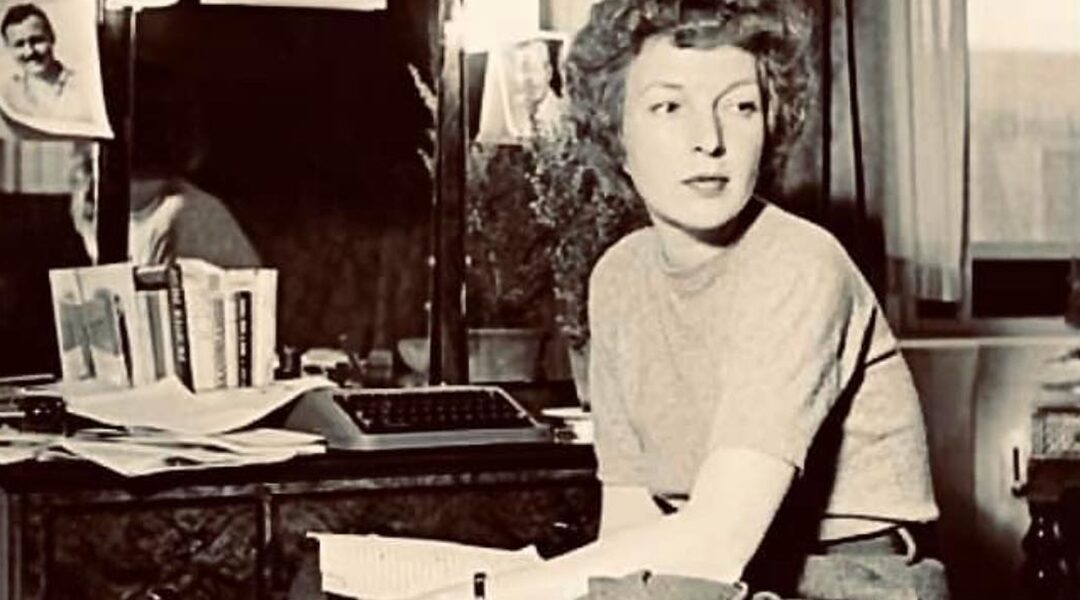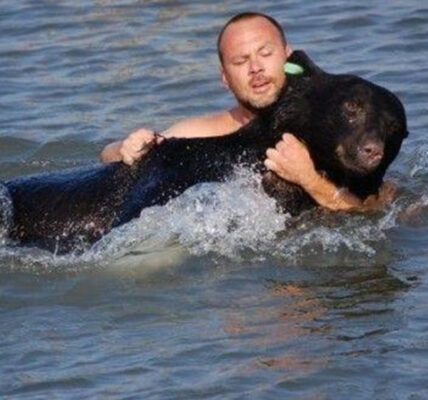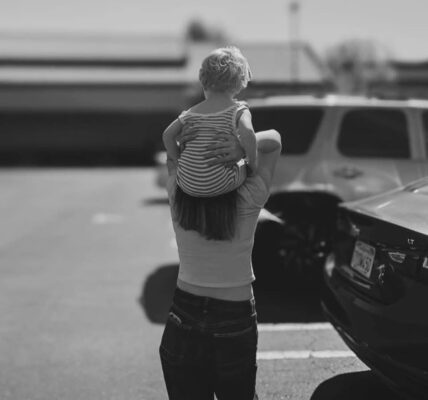She was never meant to be there.
By every rule, by every expectation, Martha Gellhorn should have been watching from a distance—on a transport barge in the English Channel with the other accredited war correspondents, waiting for reports to come back, writing stories secondhand. Women were not allowed on the front lines of the invasion of Europe. It was dangerous, chaotic, unthinkable. But Martha was never one to accept the word “no.”
On the night of June 5, 1944, she made her choice.
With her press credentials in hand, she approached a hospital barge. She told the guards she was there to interview the nurses, to capture the human side of preparation. It was a fabrication, of course, but it was delivered with such confidence that they waved her through. She walked aboard, found her way to a bathroom, and locked the door. There, in that cramped, airless space, she spent the night seasick and trembling—but resolute.
When dawn broke, she emerged into history.

Spread before her was a sight few had ever seen: the greatest armada the world had known. Thousands of ships stretching across the horizon, the sky alive with the roar of bombers, and in the distance, the dark cliffs of Normandy. On this day—June 6, 1944—160,000 men were sailing into the crucible of war.
Martha had come to write about it. What she found instead was something far more urgent.
As the boats advanced, the sea filled with chaos—men shot before they reached the sand, bodies bobbing in the water, wounded soldiers clinging to wreckage, calling for help. The journalists, the ones who had followed the rules, were miles away. But Martha was here, and there was no question in her mind what needed to be done. She jumped in.

Shoulder to shoulder with medics, she pulled the wounded from the water. She bandaged what she could, comforted those in agony, steadied men who were slipping into shock. Her hands blistered from gripping stretchers, her body drenched by seawater and sweat. She had come as a reporter, but by nightfall she was something else entirely: a stretcher-bearer on Omaha Beach, stumbling across sand littered with mines and blood.
Hour after hour, through smoke and terror, she labored alongside the soldiers. She carried the broken, tended to the dying, and somehow found the courage to keep moving forward as gunfire raked the shoreline. There was no notebook in her hand, no typewriter waiting for her words. There was only the next man to save.
In those endless hours, the daring that had carried her onto the barge transformed into something much deeper. Bravery.
By the time the beach was secured, Martha Gellhorn was no longer just a witness to history. She was part of it. The only woman to land at Normandy on D-Day—not as an official correspondent, not as a nurse, but as a human being who refused to stand by while others suffered.
Later, she would write about what she saw, about the impossible courage of the young men who stormed the cliffs, about the terrible cost of freedom. But her words carried a different weight now. They were not penned by a distant observer, but by someone who had walked through hell with the soldiers themselves.
Martha Gellhorn would go on to become one of the greatest war correspondents of the 20th century, reporting from conflicts across the globe for the rest of her life. But on June 6, 1944, she proved something extraordinary: that heroism is not always planned, not always sanctioned, not always recognized in the moment. Sometimes, it is a decision made in a locked bathroom on a hospital barge. Sometimes, it is the courage to act when history demands more than words.
That day, the world saw the bravery of thousands. And among them—unnoticed by many, but undeniable—was Martha Gellhorn, the lone woman of D-Day.




